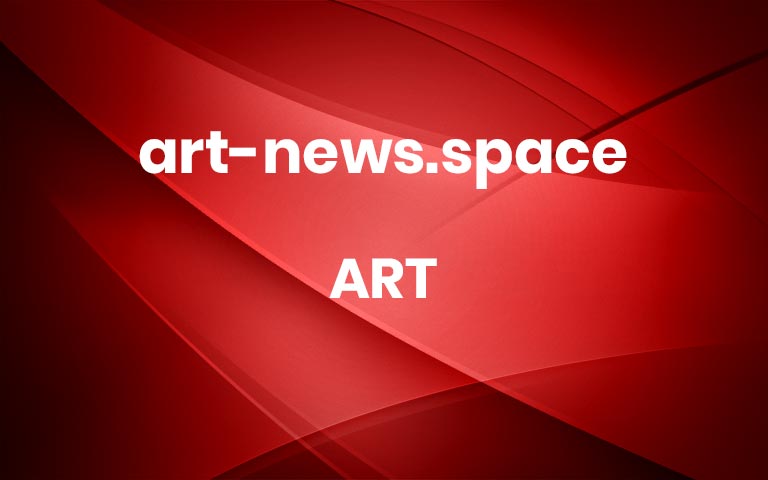“Oak Passage” (2025) and “Ferns” (2025), installation view at the National Galleries of Scotland. All images courtesy of the artist and National Galleries of Scotland, shared with permission
An Expansive Survey in Scotland Celebrates Five Decades of Land Art by Andy Goldsworthy
July 29, 2025
ArtNature
Kate Mothes
Share
Pin
Email
Bookmark
Andy Goldsworthy grew up on the edge of Leeds, with Yorkshire’s rural fields in one direction and the city’s urban center in the other. As a teenager, he worked on local farms, which instilled an early respect for the land—and a fascination that would blossom into an interdisciplinary art practice throughout the next several decades. Based for the last forty years in Dumfriesshire in southern Scotland, the artist continues to draw inspiration from the forests, hills, and fields of this picturesque part of Britain.
Employing a wide range of materials and settings from stones and leaves to streams and trees, the artist creates encounters that explore human interactions with the land. “The intention is…not to mimic nature but to understand it,” he told NPR in 2015. Temporary installations, typically documented after completion and then left to elements, mirror the way nature is always changing, whether going through cycles, evolving over time, or being actively transformed by human forces.
“Edges made by finding leaves the same size. Tearing one in two. Spitting underneath and pressing flat on to another. Brough, Cumbria. Cherry patch. 4 November 1984” (1984), Cibachrome photograph
The National Galleries of Scotland presents a new retrospective, Andy Goldsworthy: Fifty Years, in the Royal Scottish Academy building. Celebrating the trailblazing artist’s career, the survey features more than 200 photographs, sketchbooks, sculptures, installations, and archival items dating from some of his earliest experiments in the mid-1970s to pieces conceived for the show this year.
Goldsworthy draws our attention to nature and the way it behaves—or doesn’t—by conjuring uncanny occurrences. A crack in fallen leaves resembles a fissure in the earth, or he highlights a hole in an elm tree by literally outlining the jagged opening in bright yellow. The artist also interacts with nature through physical participation, like climbing through a wintry hedgerow as if challenging its function as a boundary and demonstrating its possibilities as a conduit instead.
Goldsworthy learned many of the techniques he employs in his practice through his early experiences working on farms in Yorkshire. He baled hay, prepared fields for planting through a method called harrowing, fed livestock, and piled stones. In art school, he began experimenting with photography and film to document ephemeral works he created in the landscape.
Throughout the past five decades, Goldsworthy has established himself as a leading contemporary land artist, influenced by the work of seminal figures like Robert Smithson and Joseph Beuys and in turn influencing the work of younger artists like Jon Foreman or Laura Ellen Bacon. Goldsworthy emphasizes the beauty and nobility of working the land, not by trying to control it but by working in tandem with his surroundings and to illuminate details and patterns we might not otherwise see.
“Elm leaves held with water to fractured bough of fallen elm. Dumfriesshire, Scotland. 29 October 2010” (2010), from ‘Fallen Elm’ (2009–ongoing), a suite of ninety archival inkjet prints
The human relationship with the natural environment continues to be a central focus of Goldsworthy’s interventions, from a piece for which he carved up chunks of snow and hauled them across the countryside to the way he interprets the interior space of the Royal Scottish Academy building for the current exhibition. A large-scale installation called “Oak Passage,” for example, transforms a gallery into a tidy thicket with a lane through the center, presenting both a barrier and a channel, depending on how it’s approached.
While he doesn’t generally view himself as a performer, he often portrays himself in the midst of interventions, capturing the activities in photos and film. A public context for his pieces, whether installed inside or outdoors, invites people to move around and activate the work. For this exhibition, his interactions with the historic Royal Scottish Academy building are conceived as a single work, considering the continuum of history, people, art, and the elements that have had an impact on the site over time.
Find more on the artist’s website. Plan your visit to Andy Goldsworthy: Fifty Years, which continues through November 25 in Edinburgh, on the museum’s website. Head down the road to the National Museum of Scotland and keep an eye out for a small sculpture by Goldsworthy permanently marking the entrance to the atmospheric Early People display. And if you’re headed to Yorkshire, discover four permanent installations by the artist along the Andy Goldsworthy Trail.
“Wool Runner” (2025) at the Royal Scottish Academy, National Galleries of Scotland
“Frozen patch of snow. Each section carved with a stick. Carried about 150 paces, several broken along the way. Began to thaw as day warmed up. Helbeck, Cumbria. March 1984 (1984), Cibachrome photograph
“Cracked Line through Leaves” (1986)
“Hedge crawl. Dawn. Frost. Cold hands. Sinderby, England. 4 March 2014” (2014), video still
“Wool. Hung from fallen elm. Dumfriesshire, Scotland. 6 August 2015” (2015), from ‘Fallen Elm’ (2009-ongoing) , a suite of ninety archival inkjet prints
“Gravestones” (2025) at the Royal Scottish Academy, National Galleries of Scotland
“Hazel stick throws. Banks, Cumbria. 10 July 1980” (1980), suite of nine black-and-white photographs
“Rain shadow. Royal Scottish Academy, Edinburgh, Scotland. 10 June 2024” (2024)
“Stretched canvas on field, with mineral block removed, after a few days of sheep eating it” (1997)
Do stories and artists like this matter to you? Become a Colossal Member now, and support independent arts publishing.
Hide advertising
Save your favorite articles
Get 15% off in the Colossal Shop
Receive members-only newsletter
Give 1% for art supplies in K-12 classrooms
Join us today!
$7/month
$75/year
Explore membership options
Previous articleNext article More


